Warcraft: Amirdrassil complete
After our best raid performance in Aberrus, we clobbered Amirdrassil without breaking a sweat. All nine bosses dropped in only 19 attempts, which is crazy low.
In some ways it was a bit of a let down: it was too easy1, with even penultimate boss Tindral only taking a single attempt, and Fyrakk four. Four runs for the final boss of a tier is a little ridiculous.
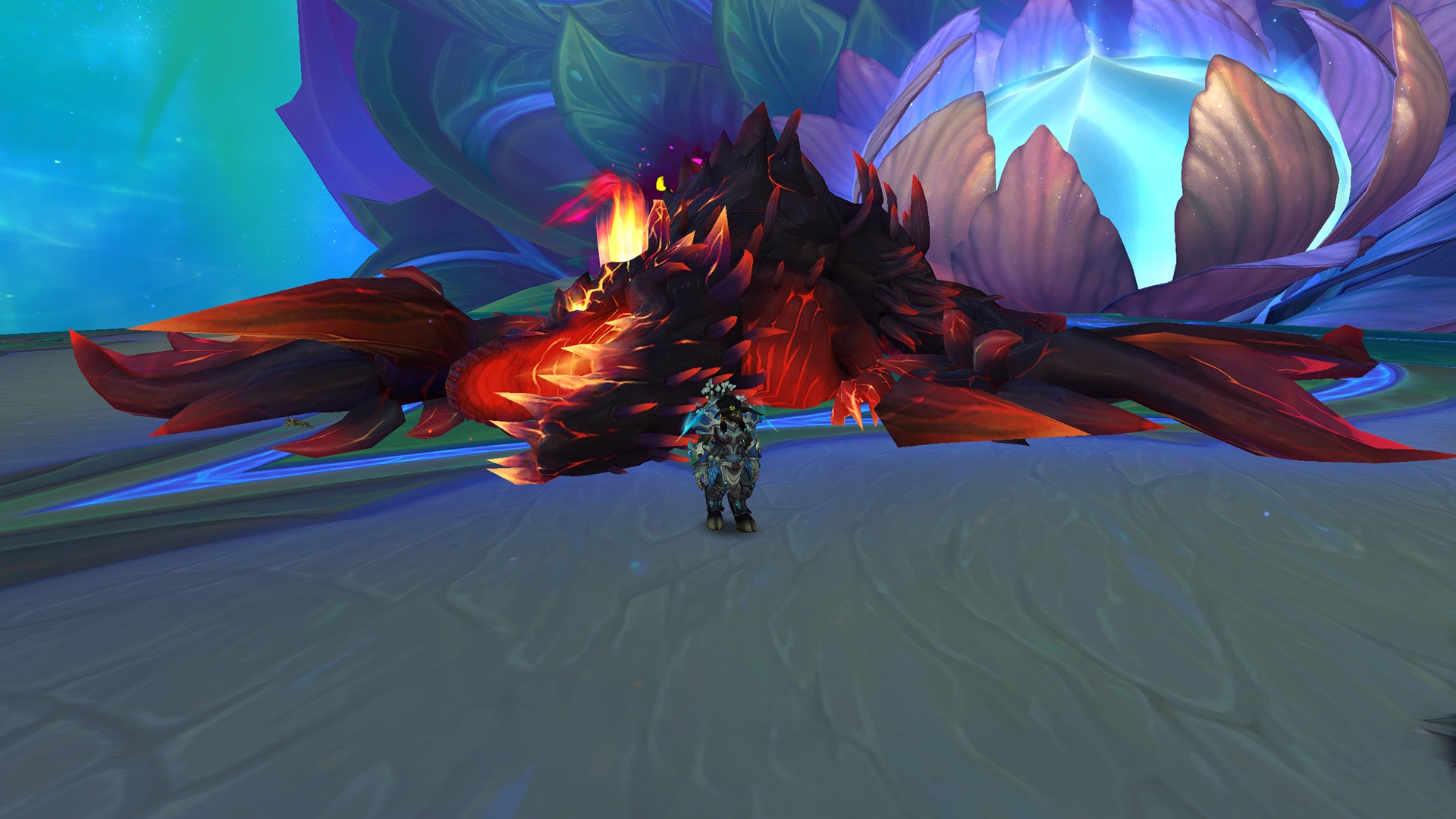
Farewell Fyrakk
It’s clear Blizzard has decided Normal Raiding should be a pushover even for casual weekly guilds like ours. Which means Heroic is the new Normal, while Mythic is still nigh-impossible: some Race to World First guilds took over 1000 attempts to clear Mythic Tindral before nerfs!
(Speaking of RWF, this was one of the great tiers: watching Echo and Liquid neck-and-neck on Tindral and Fyrakk was amazing and really either guild could have grabbed the win. A great relief after the stunted Aberrus race. Grats to Echo for retaking the crown (and for the welcome return of Scripe’s headset smashing victory cry!).
In Aberrus our guild made a late push into Heroic for the first time, advancing all the way to Sarkareth before we ran out of time to get Ahead of the Curve. This time we would have plenty of time to get the AotC achievement, but strangely my motivation to continue vanished after the Normal clear. Despite raiding being my favourite WoW activity, the idea of eking out gear point-by-point to run the same-bosses-but-harder was a grind too far. As a consequence I stepped down from Heroic progress, which was a hard decision but I think the right one. I’m looking forward to being jealous of all our raiders on their Heroic mounts :-)
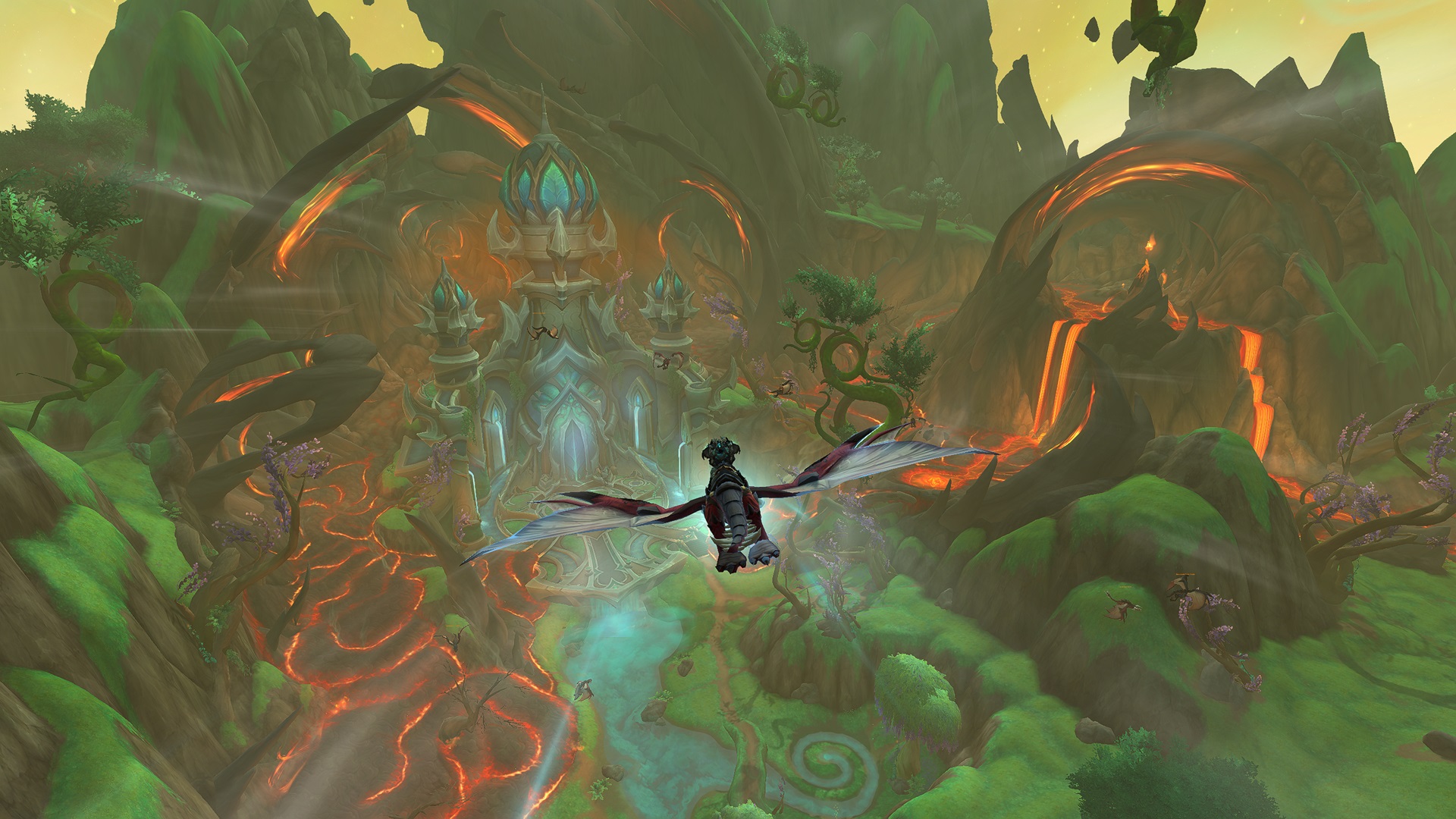
Approaching Amirdrassil
Dragonflight has been an excellent expansion with plenty of content, but interestingly for the first time in a long time I found myself drifting way from following the storylines closely, and I didn’t bother with all the collectibles and side quests as the point releases rolled out. I was finding that the scaffolding behind an MMO like Warcraft was starting to show through a bit too much: point releases with predictable and easy gear catch-ups, ilvl increases because things have to go up, strange loot blockers and rules (e.g. not being able to upgrade with higher level tokens without also grinding lower level ones), etc.
Ironically enough I think the announcement of the Worldsoul Saga expansions is a key reason for my disenchantment, despite (or because of?) the Saga plans sounding excellent. Knowing it would be a nigh on a year before genuinely new content arrived, with only fated raids to fill the gap, was pretty demotivating. Blizzard obviously realised it was a big ask to keep people subscribed for that long a gap without a new raid, and their 2024 timeline was a good attempt at filling the void with promised activities, but in the end I think I felt that maintaining interest for that long was too hard.
The bug may bite again after a short break, but for now Warcraft is on hiatus until the War Within gets close. After all that was a killer cinematic!
-
So easy that I am almost tempted to withdraw my ‘normal raiders deserve a mount’ plea…but we do! ↩︎
The Last of Us Part II: We let you live and you wasted it
I’ve been meaning to write about The Last of Us Part II for some time. It was a while ago now that I played it, but it’s hung around in my head, so here it is.
I generally don’t pay much attention to reviews of games, but I do remember that the reaction to TLoU2 on release was quite extreme: debates about excessive violence and the paradoxical way the game tries to condemn violence at the same time as forcing the player to participate in it. It’s a fair criticism, but opening that kind of debate is something that art does—it’s really down to whether the attempt works.
And for TLoU2 I think it does. Just.
Most of the violence is no worse than the first game, though just as depressing. It’s bizarre and counter-intuitive to be brazenly killing so many humans given the framing (and even title) of the game, but it is a game. Action games demand relentless murder, for better or (often) worse, and TLoU2 is an action game despite the heavyweight storytelling.
And just like the first game, the storytelling is the saving grace. It’s brutal and unforgiving, even drifting into absurdity at times, but the core story of loss and revenge and futility is very powerful. The surprise point-of-view switch is very daring given the potential for it to backfire disastrously, but somewhat miraculously the developers make it work despite the huge emotional heft that remains from the first game.
In many ways TLoU2 veers away from it’s core remit of zombie survival horror. In the sequel the zombies are almost inconsequential—it’s the humans that matter. There are still moments of classic jump-scare zombie gaming (the basement of a hospital the best shudder-filled example), but it’s the humans who provide the true horror, the tension, and all of the story beats. I guess that was true of the back half of TLoU too, but here it really is about the myriad ways humans can be awful to each other.
Even in the grim dark future, there is role playing
The violence is sometimes unwatchable. There are two or three horribly brutal moments that scar your brain and won’t go away, even months later. The game tries to balance them with semi-absurd scenes of mass destruction and impossible odds, but those scenes were generally forgettable and sometimes even a mistake, unnecessarily removing some of the tightly scripted tension.
I think this is especially true of the fourth act, which is disappointing and feels like a real stretch. It is probably the main reason the criticisms came strong and hard. Unlike the extra acts of both Red Dead games, it feels tacked on and unexpected in a bad way—too long and the nihilism would have been more appropriate earlier in the game to give the player a chance to come to terms with it. As it stands we are forced into a very dark sequence that made me put the controller down and hope that by not engaging some other resolution might be possible. Alas no.
Metaphor
It’s a depressing world the game depicts, one of little trust and even less hope, but you can’t help feeling the deep emotion and desperate connection the characters seek. You live and breathe their every hope and disappointment, their fury and need for resolution, their loves and their hatreds. One line in particular stopped me in my tracks, and has lived with me ever since:
“We let you live and you wasted it."
Gut wrenching.
Warcraft: The Madness of the Race to World First
I’ve enjoyed following the Warcraft Race for World First over the last few years. It’s a crazy event where two dominant guilds—Echo and Liquid—vie to be the first to defeat the Mythic Raid each new tier. There are other guilds that race too (Method and BDG being the most visible), but they acknowledge that they’re competing for bronze given the resources of the big two. The races generates enormous hype for each new raid and for Warcraft in general, helped by things like amazing RWF trailers the guilds create before each new raid.
The main reason I say it’s ‘crazy’ is because of the preparation and time required to be competitive, and the hours required to actually defeat the raid.
The Prep

Each guild has a roster of around 30 players, and each of those players gears up eight or more characters in the lead up to the raid launch. For tanks that means one of each class (and often multiples of ‘flavour of the moment’ classes to give a better chance at getting the lucky drop). That gearing process is fairly easy prior to the patch release, given most of those players already maintain multiple super highly geared characters.
Once the patch is launched the real madness begins. Because a new patch brings new item levels and power upgrades, each of those eight+ characters needs to be geared as fast as possible. To accomplish this the guilds run ‘splits’, which are multiple Heroic raid runs on every character, assisted by their fans in the Warcraft community. The goal is to funnel as much loot as fast as possible to the raiders, with payments of up to 500,000 gold to the community members running the raids with them in return for a pledge to trade any and all loot to the guild raiders.
Both Echo and Liquid appear to hate this split process, as it costs them a phenomenal amount of gold, and is also incredibly repetitive and boring. The raid leaders also spend weeks planning the upgrades via epic spreadsheet work: how drops should be allocated, the composition of the raids to optimise efficiency, etc.
The splits are also a less than ideal way for race to start, as viewers tuning in for the first 3-4 days are treated with faceroll Heroic raids instead of the challenge and excitement of the Mythic raid. Before Dragonflight there was a ‘Heroic week’ prior to the Mythic release, and that seemed to work better for both the raiders and the viewers.
After the splits are done each guild ends up with a roster of 20-25 extremely well geared characters—basically they all have best in slot drops and crafted gear. This leaves some raiders on the bench when they don’t get lucky with loot, which must be a dire situation to be in given the months of prep those players have done just to have a chance at raiding.
Tobo, a newish recruit to Echo, was in this situation for Aberrus: he got bad drops, ended up on the bench, and spent the entire race trying to farm upgrades only for the race to be over before he was geared. It was a viscous circle because he wasn’t getting any drops from the Mythic raid itself. Ironically Tobo was one of only ten or so Echo raiders who were on location for the raid, so he was on cam the entire time. Consequently his stream was one of the most entertaining of the event as he ran the same M+ dungeon 22 times in a row to try and get a trinket, then farmed the first boss trash endlessly for a chest. Hundreds of viewers were cheering him on and joining the farm groups to help, and the rest of the on-site raiders celebrated with him when he eventually did find the elusive loot.
The Race
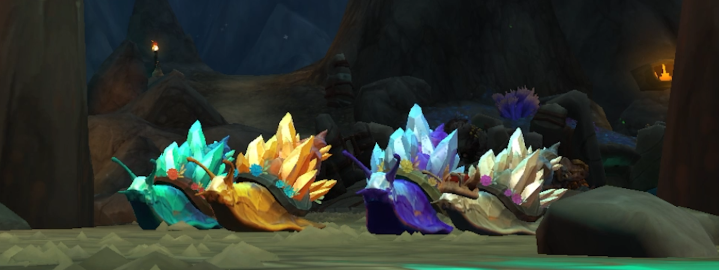
Once the farming is done and the lucky twenty heavily-geared characters selected, the real race begins. Whilst all the bosses bar the final are tested on the PTR realms, most are buffed or have subtle changes that make the raid a real challenge even with those min-maxed players. The first couple of bosses drop easy, but there’s (nearly) always a wall boss that stops progress in its tracks, forcing deep analysis and pixel perfect play. Halondrus and Anduin in Sepulcher are good examples.
This tier was slightly different, with Aberrus proving barely any challenge even with the bosses that could have posed problems. The World First tables for Aberrus are very different as ‘normal’ guilds went into Mythic without min-maxing, allowing them to claim world first kills on the first four bosses before the bigger teams ventured in and started to dominate due to their better gearing.
Echo, Liquid, and Method all rolled through with the only real delays coming with the last two bosses (Neltharion and Sarkareth), but even they only required 72 and 114 pulls. By contrast, Halondrus and Anduin in Sepulcher required 357 and 216 pulls respectively, and along with the final boss were largely responsible for the race lasting 12 days.
This time it lasted only three, which felt too short for the effort put in by the players. Many players commented on the fact that the splits took the same amount of time as the actual raid, let alone the months of prep. Whilst it’s a fine balance for Blizzard given they want the raid to be accessible to mortals, it needs to be a real challenge rather than a sprint for the racers.
The final boss was the only one that forced a pull count over 100. Liquid did some early morning off-stream pulls in order to hide their Phase 3 strat, emerging from the darkness to post a blistering 14% run to put the scare into Echo who were late into their night of attempts (as I’ll discuss below, it’s incredible Echo were even competitive on a tier this short given they have a major timezone disadvantage).
Liquid stayed ahead and got Sarkareth to 1.82% with Echo only managing to meet Liquid’s 14%. Then something crazy happened, which hasn’t been commented on much: Liquid were mid way through a pull when Echo posted a breakthrough 5.89% attempt, meaning the kill was now imminent for both teams. I don’t think the Liquid Raiders would have been aware, but their Raid Leader Maximum almost certainly was. Amazingly on that very same pull Liquid got the kill.
The celebrations were riotous, especially after the letdown of Vault of the Incarnates where a late Xmas-saving nerf to Raszageth led to Echo killing her while Liquid slept.
The Elephant
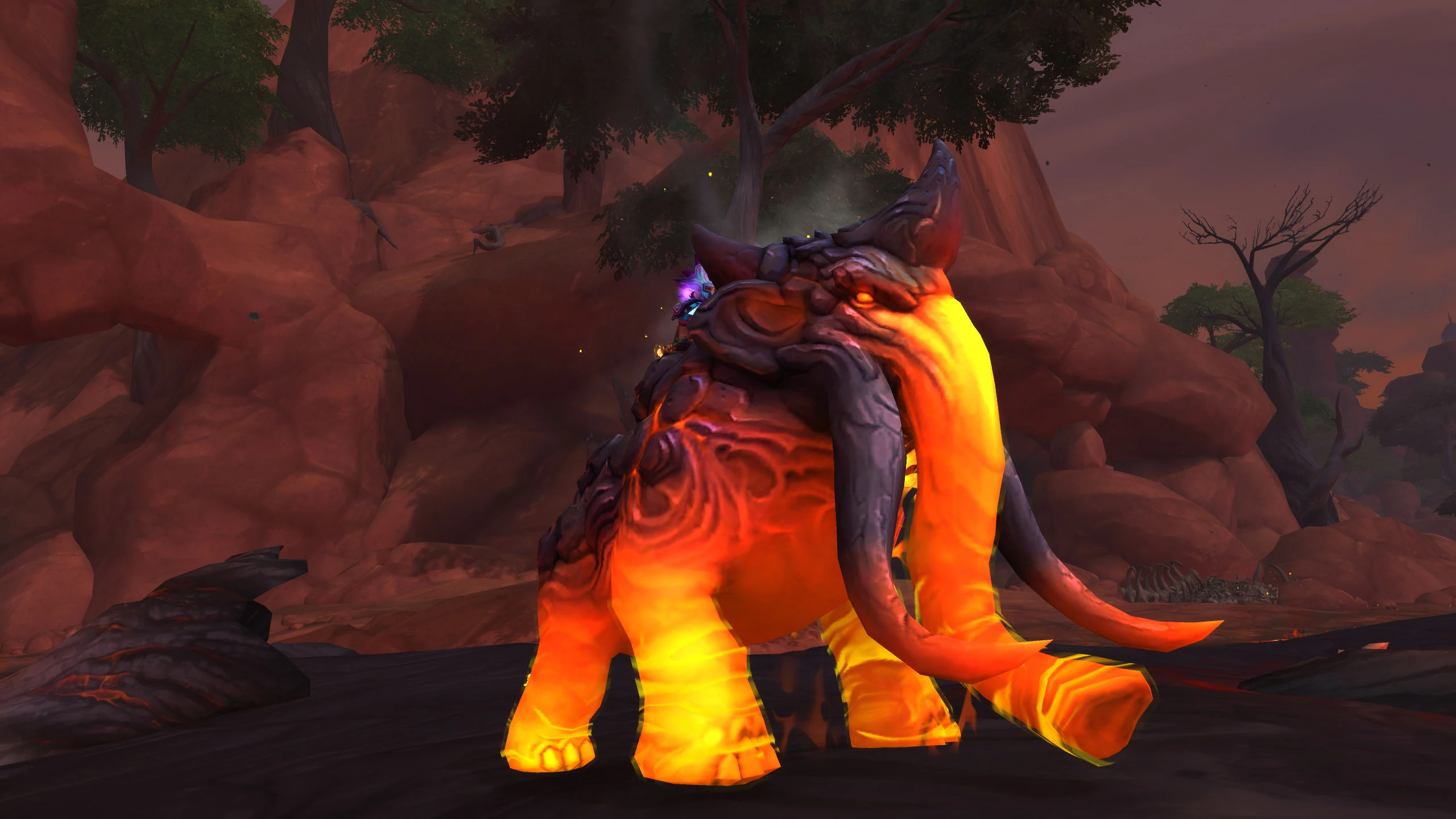
There was, and is, one major problem with this race. Timezones, and more specifically Blizzard’s policy of not having a global release of the raid. The competitive US guilds (only Liquid really, though BDG did a great job to get World fourth) get a 12 hourish headstart on the raid compared to the EU teams (Echo and Method). This is patently absurd for a race—having a team start ahead of another competing team in any race doesn’t make any sense unless it’s a handicapped event.
For Aberrus this meant that whilst Liquid achieved and deserved the first kill, Echo killed the boss only a few hours later (and even that delay was almost certainly due to hearing Liquid had won when Echo were within a few percentage points of victory). Given Liquid had a 12 hour headstart, does a kill within 3 hours mean Echo in fact ‘won’? Obviously it would be ridiculous to have Liquid have to sit around and wait for a timer to pass before celebrating, but the time difference really makes a mockery of it being a true race.
Echo have been very vocal about this problem for obvious reasons, both when they win (which is remarkable) and lose, and Liquid acknowledge the problem too. Both teams would way prefer to test their skills on an equal footing. For raids that last beyond the 7 day reset the problem is further exacerbated as US teams will get gear upgrades from the vault and a reclear—potentially losing after a week or competing because your realm hasn’t had a reset yet is a ridiculous situation.
The apologists will claim that the 12 hour US advantage is mitigated by the EU teams being able to copy the US strategies, and by the US teams occasionally having to beta test bosses and find bugs, which then allows the EU teams to not face the same bugs. Whilst there is some truth in that, I think that if each team could choose which to have—a 12 hour headstart or a window for strat-copying—both would choose the headstart 100% of the time.
The Solution
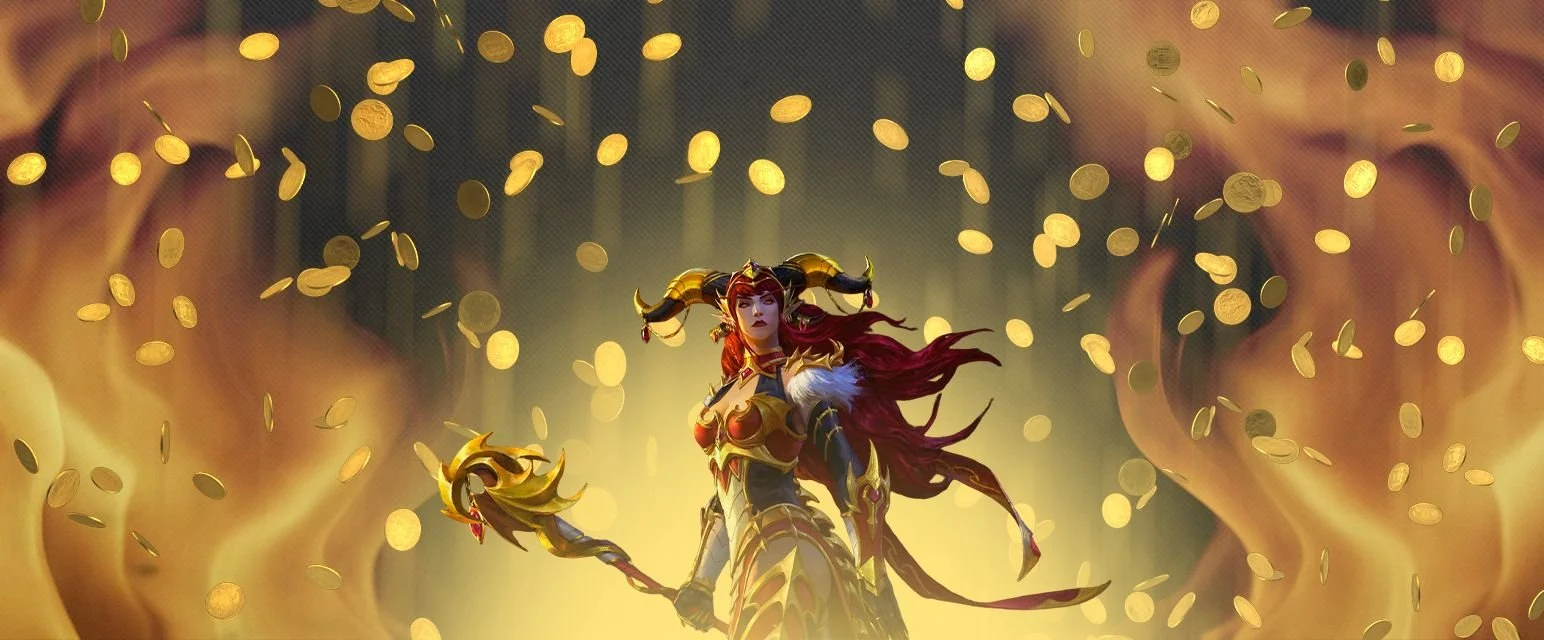
The obvious solution would be to follow FFXIV’s lead and have a global release of the raid. Let the patch roll out with the Normal and Heroic raid unlocked, and release the Mythic raid a day later. US realms can come up first, EU 12 hours later, then the raid itself unlocks at some point after that.
Blizzard don’t want to do this as it means the regular player-base are ‘suffering’ for the race, but I doubt anyone would really care if it became an expectation that the raid releases a few days after the patch. Time for people to enjoy the patch content, so some open world gearing, and then jump into the raid. It seems an easy fix that would really help make the race a bigger and better event than it already is.
If Blizzard really doesn’t like that idea, Scripe (Raid Leader for Echo) even suggested creating a separate EU realm which patches on the same timeframe as US. He guesses (and I agree) that if you did that the majority of the player-base would transfer to that server just so they can start playing the patch at the same time as the rest of the (US) world.
Another option might be to create tournament realms for the RWF. That already happens with the Mythic Dungeon Invitational and Great Push, so the technology is there. The apparent reason for not doing this is twofold: Blizzard like that the regular playerbase can contribute to the guilds who are racing by running splits with them, and Blizzard really don’t want to feel responsible for the insane preparation demands the RWF demands, fearing it would reflect badly on them.
The former makes some kind of sense, though I don’t think enough of the player-base participate to make it that invaluable. The latter is something Blizzard should fix rather than turn a blind eye to—they benefit greatly in terms of mindshare and hype from what is effectively a community created event, so it seems appropriate they should consider ways to make it more sustainable.
Sloot, a main tank for BDG, published an excellent and thoughtful post-race video which covers a lot of the problems with the race as it stands—how it’s impossible for any but the most well funded guilds to compete, the timezones, burnout—as well as some suggestions on how to fix it. It’s clear from the video how exhausted and demoralised Sloot is after the raid, and his retirement not long after confirms that.
The idea that any guild could compete, something that Scripe has been a big advocate for too, is very appealing. It would be great for the fans and Blizzard to see Australian and Asian guilds able to step up and push for podium spots, and that will only become possible with intervention from Blizzard.
If Blizzard flat-out refuse to get involved, the only other option would be to create a formal RWF League, with rules and regulations, maintained by representatives from the top guilds. Co-ordinated raid start times, roster rules, loot distribution rules, etc. It would be quite something to see Scripe and Maximum agree to anything (there’s obviously no love lost between them), but unless they do the RWF risks descending into worse chaos than it already is.
Warcraft: Aberrus complete
For the first time our guild completed a raid before a power-ramp patch, defeating Aberrus in record time and with record low attempts per boss. The raid took only 1 month of weekly raids, 32 total boss fights, at an average of 4 attempts per boss. That’s quite something when compared to our Vault of the Incarnates run which was 3 months, 121 fights, and 15 attempts per boss.

There are two prevailing theories about the difficulty, or lack thereof, of Aberrus. One is that the encounter team didn’t talk to the gear team who implemented the (very good) gear upgrade system, resulting in player power being way higher than expected. This seems to be borne out somewhat when you see the World First race being completed in only three days.
The other theory is that Aberrus was made intentionally easier than previous tiers to encourage raiding and allow more causal players the opportunity to do more than just LFR. The Normal raid was a cakewalk when compared to previous efforts—so much so that we accidentally cruised through the first seven bosses one night, often on our first attempts, when I’d been hoping that at best we could get through three.
As with most things, it’s probably a combination of both: more lenient gear and DPS/HPS checks combined with very well geared players even amongst the casual once-a-weekers like us.
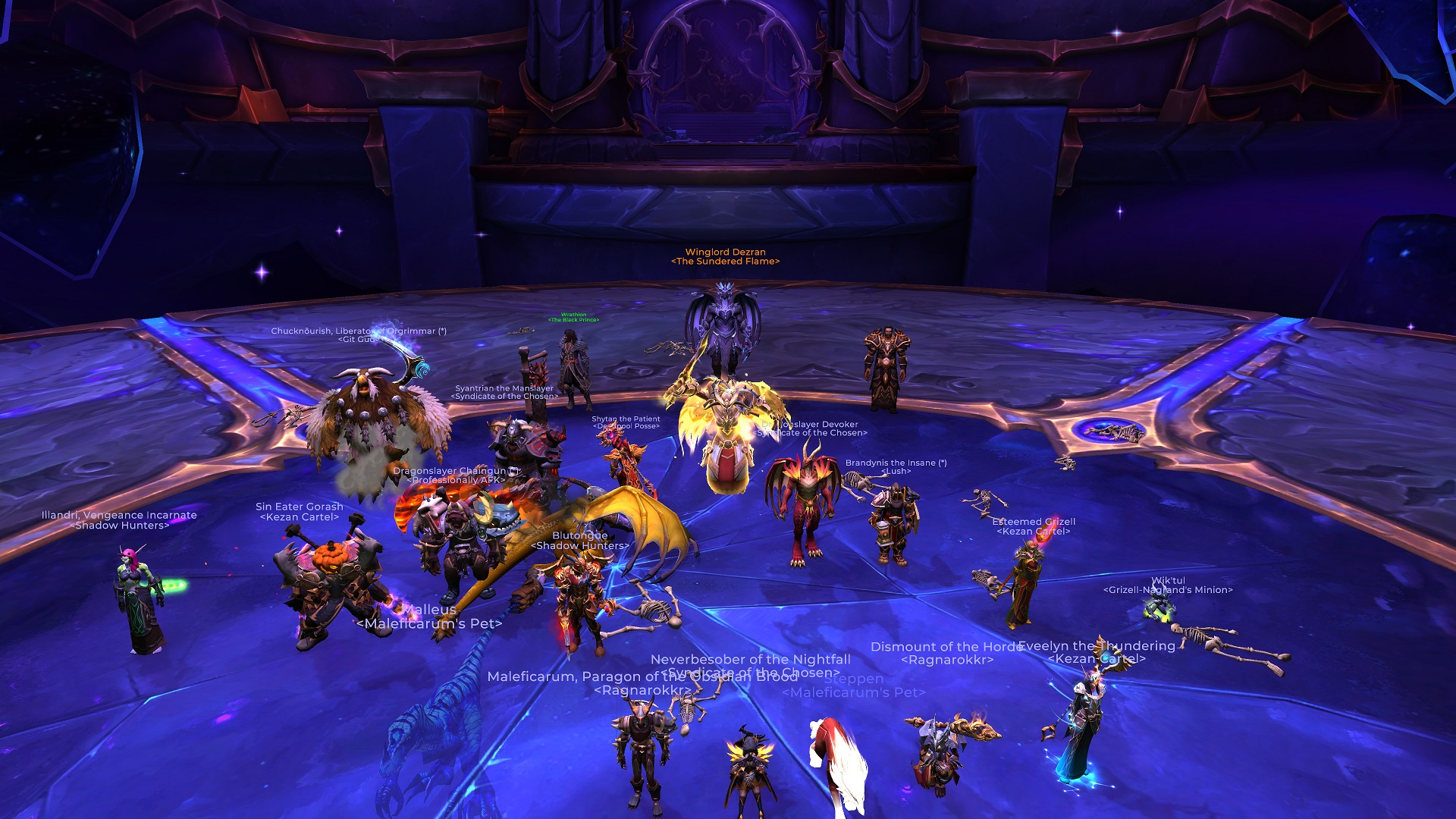
Either way I think it turned out well. We loved beating the raid early, enjoyed a lot of the bosses (personal favourites were Rashok and Neltharion), and we’ve even started working in earnest on Heroic for the first time. In fact Heroic feels like it ramps up the difficulty to what we were used to on Normal in previous tiers.
One thing I loved about this raid was how the cut scene following Sarkareth’s defeat showed our actual characters as the camera pulled back on the arena—a subtle reward1 to celebrate the team.
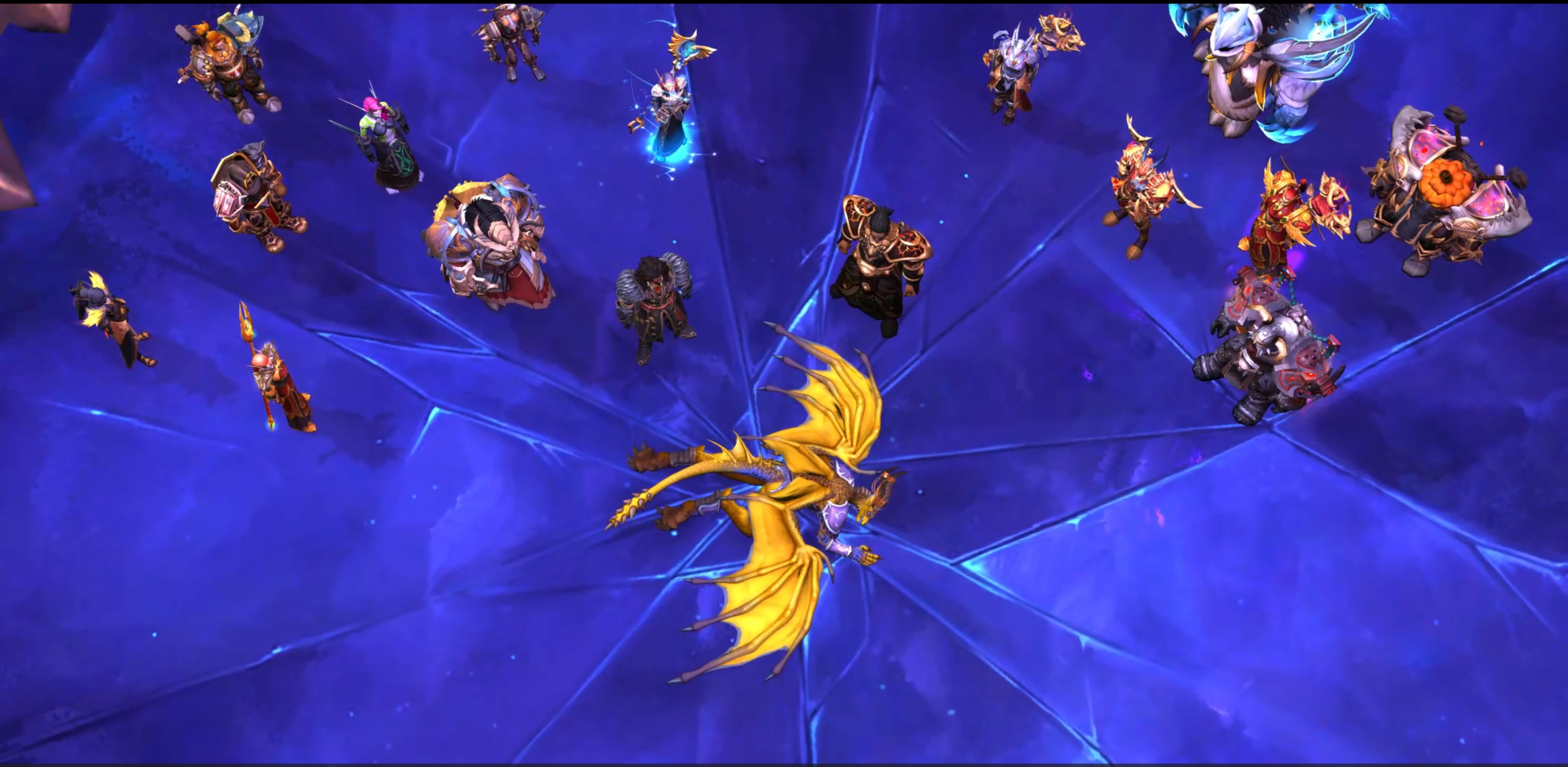
-
Inserting my customary plea here for Blizzard to give Normal raiders a title or mount reward! ↩︎
Warcraft: Vault of the Incarnates complete
Our once-weekly raid finished Vault of the Incarnates this week with what turned out to be an easy first-run-of-the-night kill of Raszageth (after 56 prior attempts!).
Vault was our best raid yet in terms of boss progress — averaging 15 attempts per boss after being around 20 for Sepulcher, Sanctum, and Nathria. We probably had about 20 two-hour sessions spread over three months to get the clear. It’s the first time we’ve cleared a raid before becoming overpowered with catch-up gear, which was a nice bonus (in lieu of any recognition from Blizzard for us Normal raiders!).
Only Raszageth gave us some pause, but it was a fight which slowly revealed itself as you understood what was required. Each phase initially appears impossible until suddenly it isn’t and the next one takes its place. The first time we had the full team working in synch the boss fell with barely a whimper.

It was a good raid with a mix of fights, though nothing that matched Halondrus and Raszageth was far easier than Anduin. We surprised ourselves by one-shotting Kurog and only needed five tries at Broodkeeper (I was expecting weeks on both), whilst Dathea and (unexpectedly) Terros proved more of a struggle.
I do wish Warcraft raids had some of the more imaginative arenas seen in FFXIV, but even there round platforms are often all we get.
Dragonflight continues to be an excellent expansion and I’m looking forward to Aberrus — early indications are that it’s going to be fun.